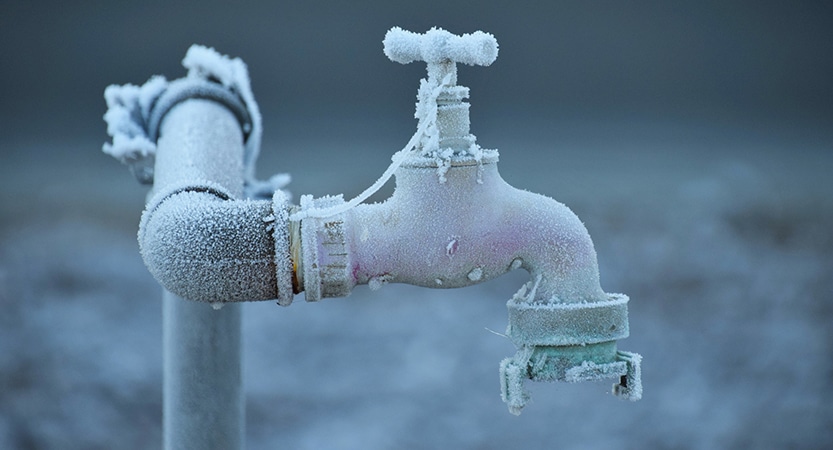Tips to Defend Your Plumbing from Freezing: Critical Strategies
Tips to Defend Your Plumbing from Freezing: Critical Strategies
Blog Article
On this page below you will discover a lot of awesome guidance pertaining to Winter Plumbing Precautions: Preventing Frozen Pipes.

Winter can wreak havoc on your pipes, specifically by freezing pipes. Below's how to avoid it from taking place and what to do if it does.
Intro
As temperatures decrease, the risk of frozen pipes increases, possibly causing pricey fixings and water damages. Comprehending just how to prevent frozen pipes is crucial for homeowners in cold climates.
Avoidance Tips
Protecting at risk pipelines
Wrap pipes in insulation sleeves or utilize heat tape to shield them from freezing temperature levels. Focus on pipelines in unheated or outside areas of the home.
Home heating techniques
Maintain indoor rooms adequately heated up, especially locations with plumbing. Open up closet doors to enable warm air to flow around pipes under sinks.
Exactly how to recognize frozen pipes
Try to find lowered water flow from taps, uncommon odors or noises from pipelines, and visible frost on revealed pipes.
Long-Term Solutions
Structural modifications
Think about rerouting pipes far from outside walls or unheated areas. Add added insulation to attics, cellars, and crawl spaces.
Upgrading insulation
Invest in top quality insulation for pipes, attic rooms, and walls. Proper insulation helps maintain consistent temperature levels and minimizes the threat of icy pipelines.
Safeguarding Outside Plumbing
Garden pipes and outdoor taps
Disconnect and drain garden hose pipes before winter months. Mount frost-proof faucets or cover outside taps with insulated caps.
Understanding Icy Pipes
What causes pipelines to ice up?
Pipes ice up when revealed to temperature levels below 32 ° F (0 ° C) for prolonged periods. As water inside the pipes freezes, it increases, putting pressure on the pipe walls and potentially creating them to break.
Threats and problems
Frozen pipes can cause supply of water disturbances, building damage, and expensive repair services. Ruptured pipelines can flooding homes and trigger comprehensive structural damages.
Indicators of Frozen Water Lines
Determining frozen pipelines early can avoid them from bursting.
What to Do If Your Pipelines Freeze
Immediate actions to take
If you suspect icy pipes, maintain faucets open up to eliminate pressure as the ice thaws. Use a hairdryer or towels taken in warm water to thaw pipes gradually.
Conclusion
Protecting against frozen pipes calls for proactive procedures and fast reactions. By comprehending the reasons, indicators, and preventive measures, property owners can shield their plumbing throughout cold weather.
6 Proven Ways to Prevent Frozen Pipes and Protect Your Home
Disconnect and Drain Garden Hoses
Before winter arrives, start by disconnecting your garden hoses and draining any remaining water. Close the shut-off valves that supply outdoor hose bibs and leave the outdoor faucet open to allow any residual water to drain. For extra protection, consider using faucet covers throughout the colder months. It’s also important to drain water from any sprinkler supply lines following the manufacturer’s directions.
Insulate Exposed Pipes
Insulating your pipes is an effective way to prevent freezing. Pipe insulation is readily available at home improvement stores and is relatively inexpensive. Pay close attention to pipes in unheated areas such as the attic, basement, crawl spaces, or garage. Apply foam insulation generously to create a buffer against the cold. You can also wrap your pipes in heat tape or thermostat-controlled heat cables for added warmth.
Seal Air Leaks
Inspect your home for any cracks or openings that could let in cold air. Seal any holes around the piping in interior or exterior walls, as well as the sill plates where your home rests on its foundation. Additionally, make sure to keep your garage door closed unless you’re entering or exiting. Leaving it open creates a significant air leak that can lead to frozen pipes.
Allow Warm Air Circulation
During cold snaps, it’s essential to allow warm air to circulate evenly throughout your home. Leave interior doors ajar to promote better airflow. Open kitchen and bathroom cabinets to help distribute heat consistently around the rooms. If you have small children or pets, be sure to remove any household chemicals or potentially harmful cleaners from open cabinets for safety.
Let Faucets Drip
A small trickle of water can make a big difference in preventing ice formation inside your pipes. When temperatures drop significantly, start a drip of water from all faucets served by exposed pipes. This continuous flow helps prevent the water from freezing. Additionally, running a few faucets slightly can relieve pressure inside the pipes, reducing the chances of a rupture if the water inside does freeze.
https://choateshvac.com/6-proven-ways-to-prevent-frozen-pipes-and-protect-your-home/

We are very drawn to How to prepare your home plumbing for winter weather and I really hope you appreciated my blog post. Sharing is good. Helping people is fun. Kudos for your time. Revisit us soon.
Suggested Site Report this page